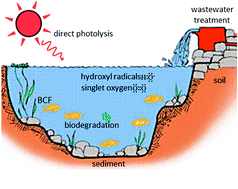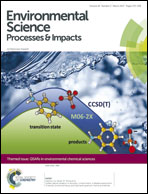A review of quantitative structure–property relationships for the fate of ionizable organic chemicals in water matrices and identification of knowledge gaps†
Abstract
Many organic chemicals are ionizable by nature. After use and release into the environment, various fate processes determine their concentrations, and hence exposure to aquatic organisms. In the absence of suitable data, such fate processes can be estimated using Quantitative Structure–Property Relationships (QSPRs). In this review we compiled available QSPRs from the open literature and assessed their applicability towards ionizable organic chemicals. Using quantitative and qualitative criteria we selected the ‘best’ QSPRs for sorption, (a)biotic degradation, and bioconcentration. The results indicate that many suitable QSPRs exist, but some critical knowledge gaps remain. Specifically, future focus should be directed towards the development of QSPR models for biodegradation in wastewater and sediment systems, direct photolysis and reaction with singlet oxygen, as well as additional reactive intermediates. Adequate QSPRs for bioconcentration in fish exist, but more accurate assessments can be achieved using pharmacologically based toxicokinetic (PBTK) models. No adequate QSPRs exist for bioconcentration in non-fish species. Due to the high variability of chemical and biological species as well as environmental conditions in QSPR datasets, accurate predictions for specific systems and inter-dataset conversions are problematic, for which standardization is needed. For all QSPR endpoints, additional data requirements involve supplementing the current chemical space covered and accurately characterizing the test systems used.

- This article is part of the themed collection: QSARs and computational chemistry methods in environmental chemical sciences


 Please wait while we load your content...
Please wait while we load your content...